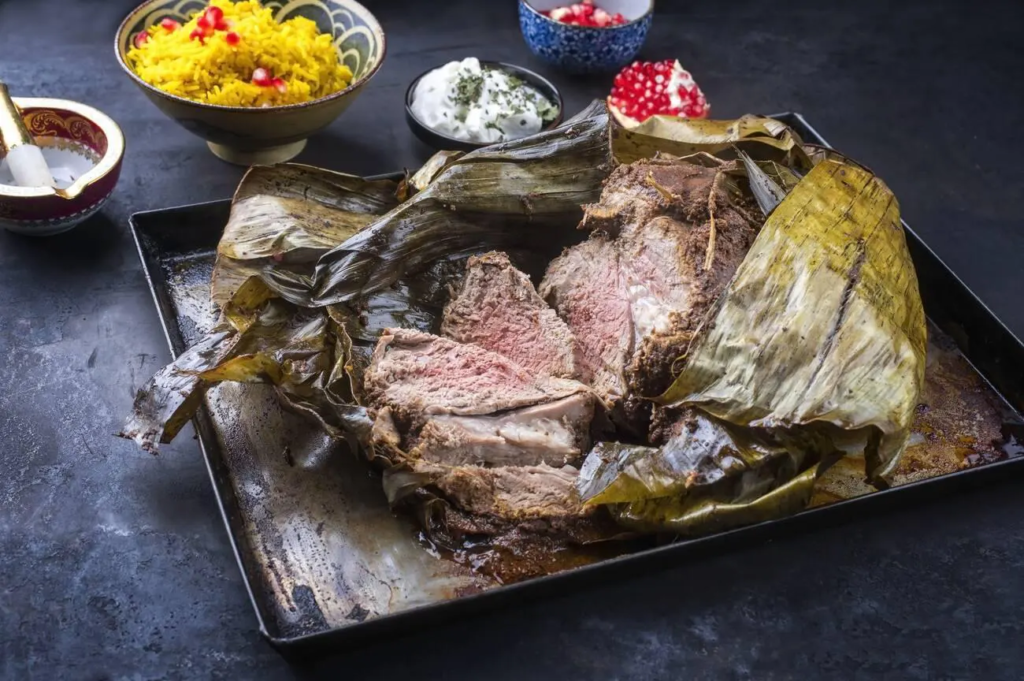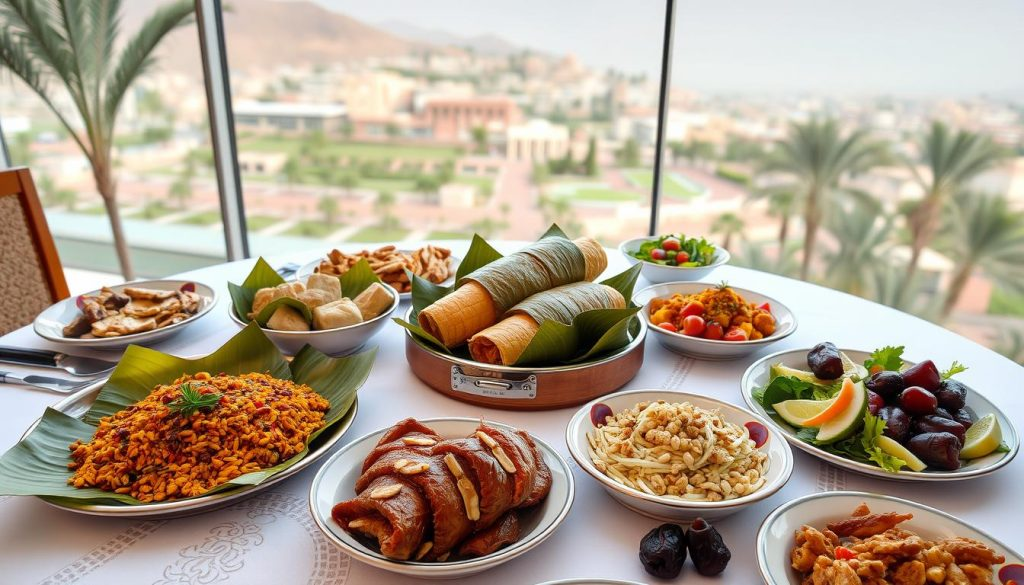The Heart of Omani Cuisine
Omani cuisine is a beautiful reflection of the country’s history, culture, and natural abundance. Every dish tells a story, and at the center of this story are the spices. These spices are not just ingredients; they are the soul of the food, providing depth, aroma, and a distinct identity to each meal. From the bustling souks of Muscat to the quiet villages in the mountains, Omani spices create flavors that are instantly recognizable and deeply cherished.
The blend of spices in Oman is unique. Influenced by centuries of trade with India, Africa, and the Arabian Peninsula, Omani kitchens carry a legacy of diverse flavors. The right combination of spices transforms ordinary ingredients into extraordinary dishes, making every bite a journey through Oman’s culinary heritage.
Signature Omani Spices
Omani cuisine thrives on a variety of spices, each bringing its own personality to the plate. Cardamom, cloves, cinnamon, saffron, turmeric, and black lime are just a few of the essential spices that define local flavors.
Cardamom, often used in both sweet and savory dishes, adds a floral and slightly citrusy aroma that can elevate a simple rice dish. Cloves provide warmth and a gentle spiciness, commonly found in traditional meat stews. Cinnamon, with its sweet and woody notes, is often blended with other spices to create the famous Omani masala.
Saffron, though delicate and expensive, is treasured for its ability to infuse rice and soups with a golden hue and a subtle, exotic fragrance. Turmeric offers an earthy tone and vibrant color, especially in seafood dishes that are common along Oman’s coast. Black lime, or loomi, is another signature ingredient, giving stews and soups a tangy, smoky taste that balances rich flavors perfectly.
Spices in Traditional Dishes
One of the most beloved Omani dishes is shuwa, a slow-cooked lamb dish often prepared for special occasions. The lamb is marinated with a mixture of ground spices including cumin, coriander, cardamom, and cloves, then wrapped in banana leaves and cooked underground for hours. This method allows the flavors of the spices to deeply penetrate the meat, resulting in a tender, aromatic feast that represents the pinnacle of Omani culinary art.
Another iconic dish is majboos, a fragrant rice dish cooked with meat or seafood. The rice absorbs the vibrant flavors of saffron, black lime, and cinnamon, creating a layered taste experience. Even the simplest home-cooked meals, such as spiced lentils or vegetable stews, rely on a careful balance of these spices to achieve their comforting, distinctive flavor.
Omani sweets, like halwa, also showcase the country’s skillful use of spices. Rosewater, cardamom, and saffron turn sugar and ghee into a delicacy that is rich, aromatic, and utterly unique. The careful blending of spices in these desserts is as important as the main course, reflecting the holistic approach Omanis take toward flavor.

The Role of Spice Markets
No discussion of Omani spices is complete without mentioning the vibrant spice markets. Traditional souks, particularly in Muscat and Nizwa, are sensory experiences. The air is heavy with the scent of cinnamon, cardamom, and frankincense. Brightly colored powders and whole spices are displayed in open sacks, inviting visitors to touch, smell, and taste.
These markets are more than commercial centers they are hubs of culture and knowledge. Local spice vendors often share tips on how to blend spices, which combinations work best for certain dishes, and the historical significance of each ingredient. This hands-on knowledge ensures that traditional flavors are preserved and passed down through generations.
Spice Blending: An Art Form
The art of spice blending is a cornerstone of Omani cooking. Unlike standardized spice mixes, Omani blends are often customized by family tradition or personal preference. A pinch of this, a dash of that, and the result is a symphony of flavors that is unique to each household.
Masala blends, for example, are carefully balanced to bring harmony between sweet, savory, and earthy notes. The correct proportion of turmeric, cumin, cinnamon, and cloves can make a dish feel warm and comforting, or vibrant and exciting. Learning the subtleties of spice blending is considered an essential skill for anyone wanting to truly master Omani cuisine.

Spices and Health Benefits
Omani spices are not only valued for their flavor but also for their health benefits. Cardamom aids digestion, turmeric is known for its anti-inflammatory properties, and black lime is rich in antioxidants. Traditional medicine in Oman often incorporates these spices, reflecting a holistic approach to food and wellness.
This dual role—enhancing taste and promoting health—makes spices an integral part of daily life. Meals are not only enjoyable but also nourishing, a tradition that connects the culinary and cultural wisdom of Oman.
Modern Twists on Classic Flavors
While traditional uses of spices remain central, modern Omani chefs are experimenting with new ways to showcase these flavors. Fusion dishes combining Omani spices with international techniques are becoming increasingly popular. Imagine saffron-infused risotto with a touch of black lime or cardamom-flavored desserts inspired by French patisserie.
These innovations demonstrate the versatility of Omani spices. They are not confined to traditional recipes but continue to inspire creativity, keeping the cuisine vibrant and relevant in a contemporary culinary landscape.
Preserving Tradition Through Spices
Spices serve as a bridge between generations, connecting the past to the present. In Omani homes, the preparation of meals is a ritual. Mothers teach daughters the secrets of spice proportions, and grandfathers recount stories of ancient trade routes that brought these flavors to their shores.
Through these practices, the legacy of Omani spices is preserved. Every meal is a celebration of heritage, culture, and craftsmanship. The unique flavors of local dishes are not accidental—they are the result of centuries of knowledge, care, and passion.
Conclusion: The Soul of Omani Cuisine
Omani spices are far more than mere ingredients. They are storytellers, healers, and artists, shaping the unforgettable flavors that define Omani cuisine. From slow-cooked lamb to fragrant rice dishes and delicate sweets, the careful use of spices transforms every meal into an experience.
The markets, the kitchens, and the families of Oman all play a role in keeping this tradition alive. By understanding and appreciating the importance of these spices, one can truly experience the heart of Oman not just its food, but its history, culture, and spirit. In every bite, there is a connection to centuries of trade, tradition, and passion, making Omani cuisine one of the richest and most flavorful culinary heritages in the world.
Also Read – Omani Food Festivals: Vibrant Celebration of Culinary Heritage



